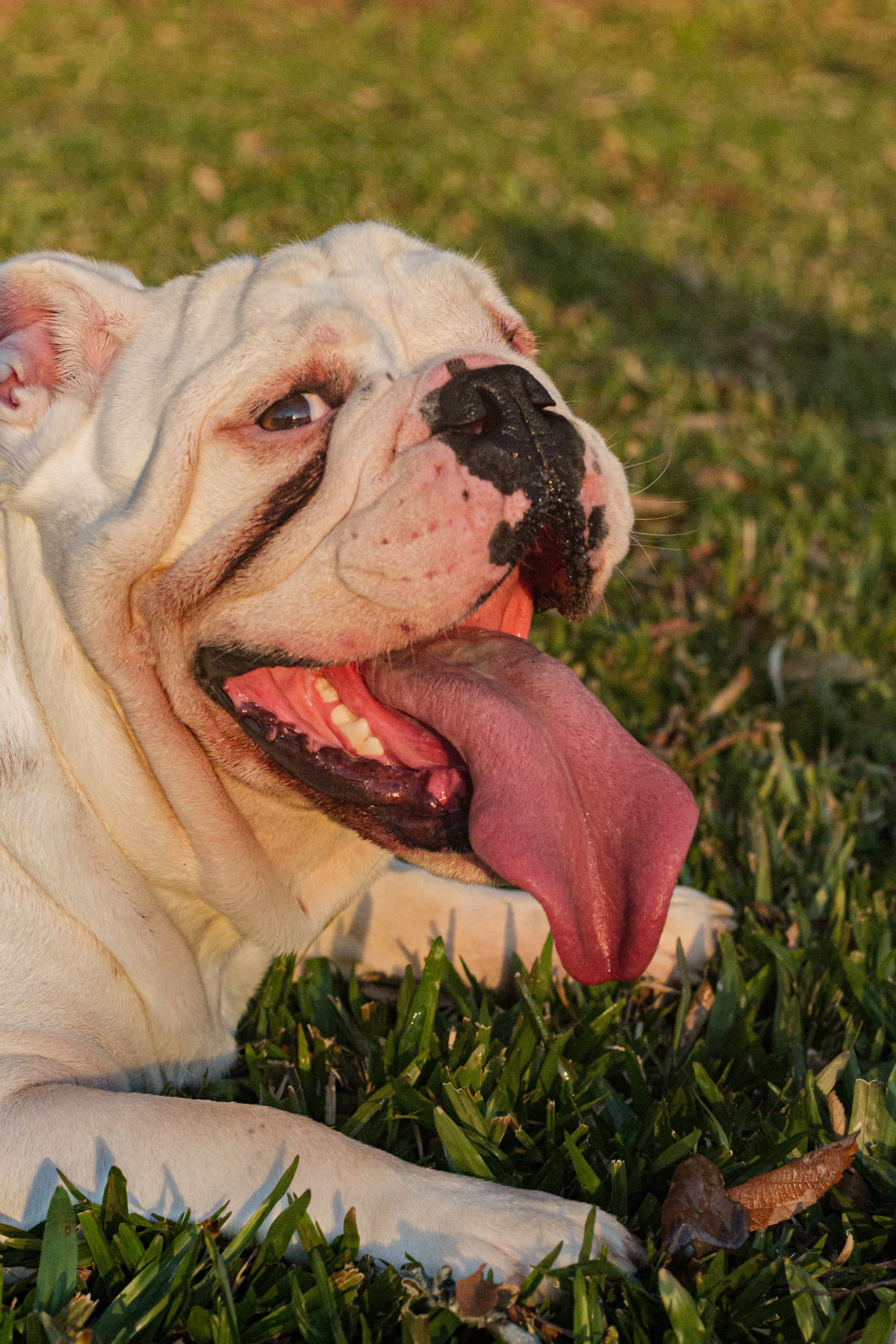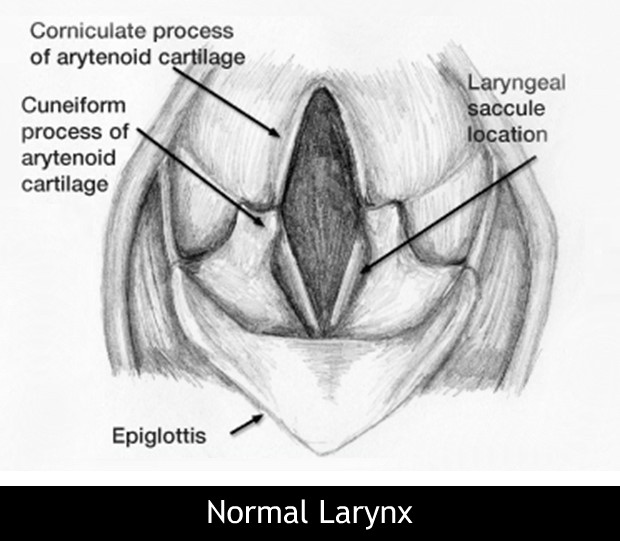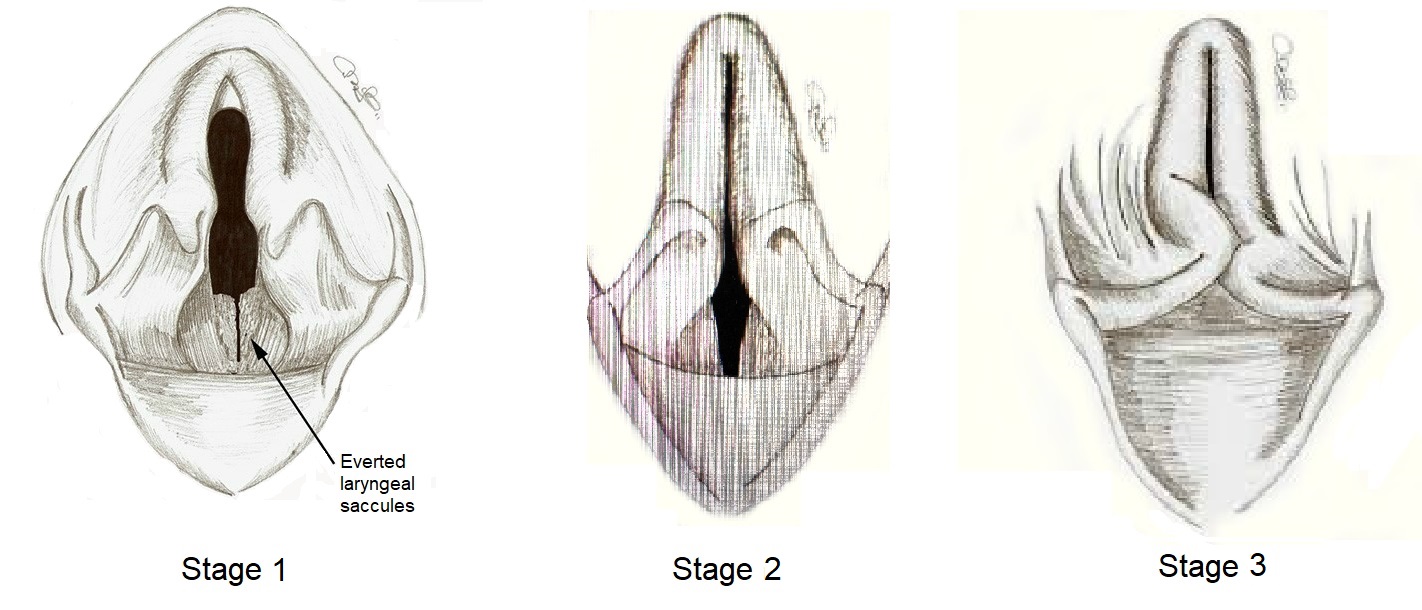The larynx is a cartilaginous opening that connects the upper respiratory tract to the lower respiratory tract (windpipe and lungs). Laryngeal collapse is a secondary change that occurs due to progressive BOAS.
In dogs with BOAS, increased upper airway resistance causes increased negative pressure within the larynx, and this in turns causes weakening and deformation of the cartilage (laryngeal collapse). Once the cartilages becomes weak, ongoing increased inspiratory effort will cause progression through each stage of collapse. Early airway correction is the best way to prevent or delay the occurrence & progression of laryngeal collapse. The rate of progression is variable in each individual dog, and is hard to predict. It is likely that overweight dogs will have a more rapid progression.
There are three stages of collapse. The higher the stage of collapse, the greater the severity of symptoms. In any dog with laryngeal collapse, symptoms will likely be worse with exercise and in warm weather. It is important to note however, that any dog with untreated BOAS can experience symptoms of concern without any inciting cause, and this risk if higher in dogs with laryngeal collapse.



